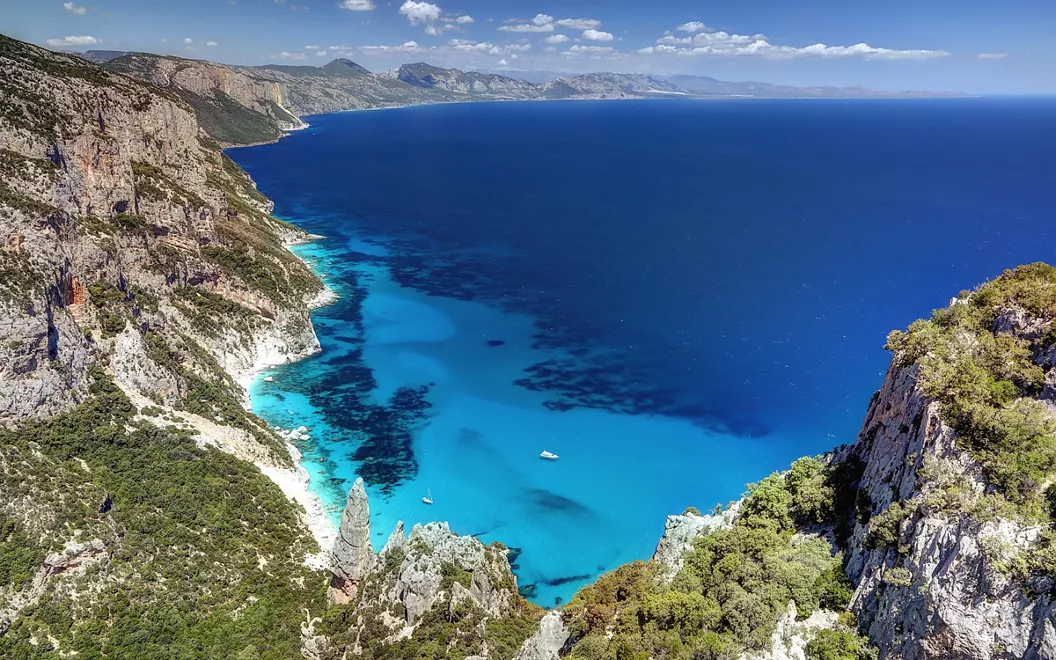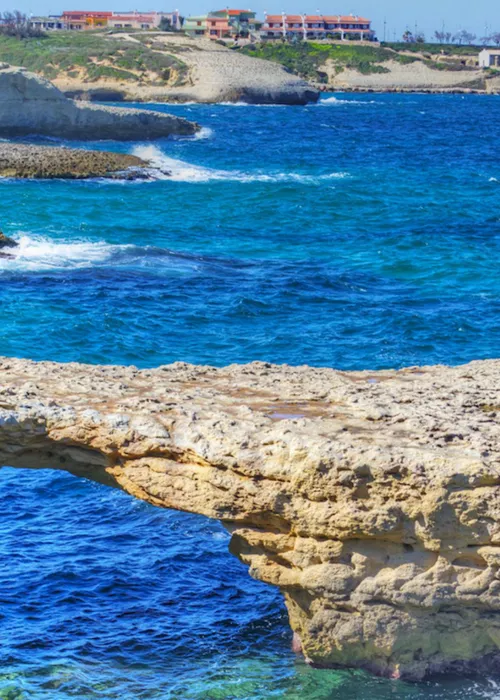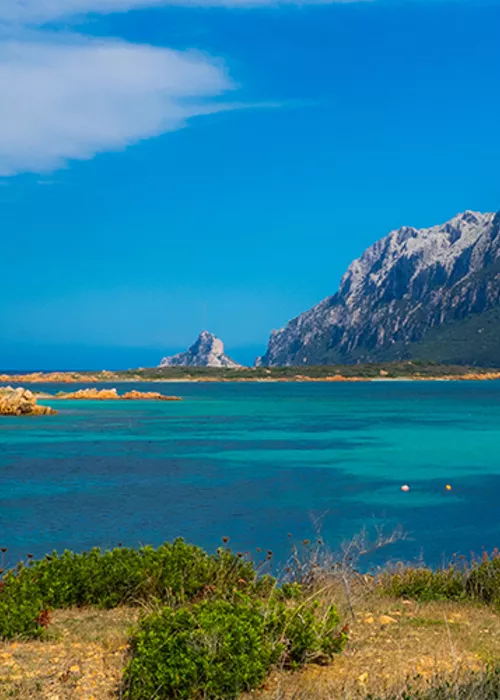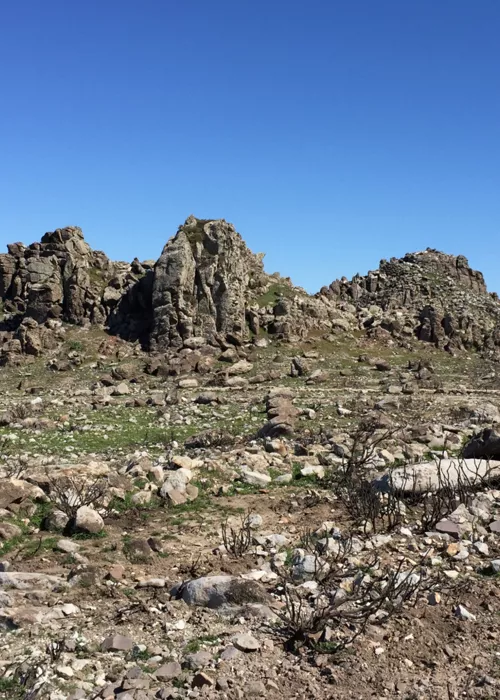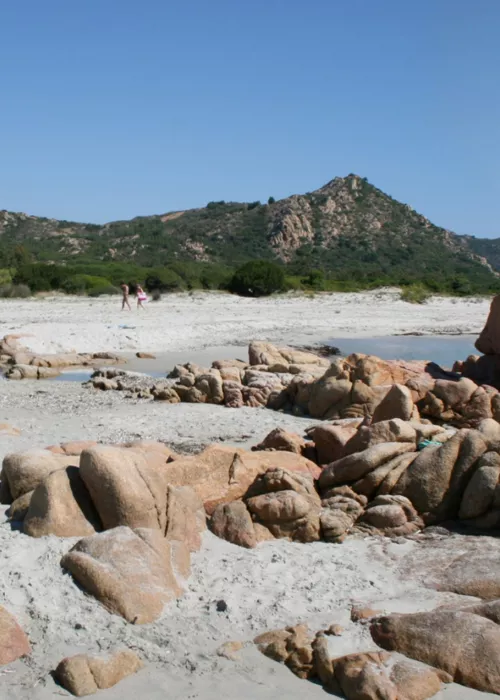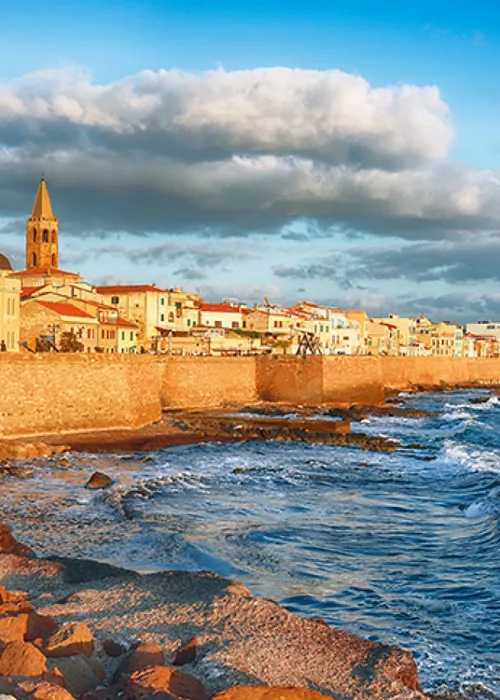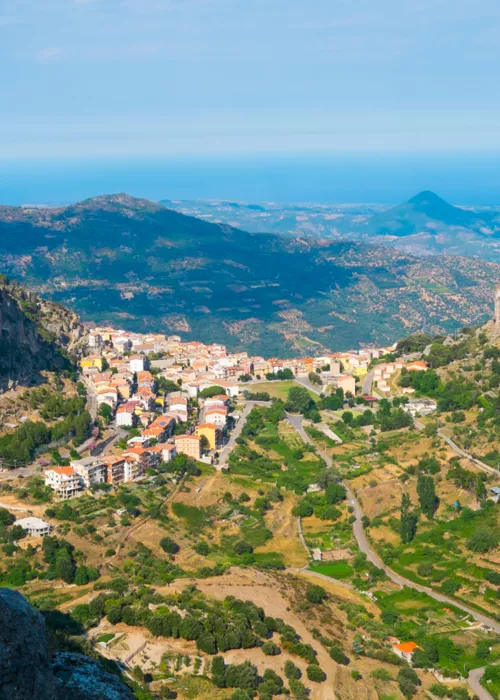Oliena

Just ten kilometres from Nuoro, clinging to the foot of the limestone reliefs of Mount Corrasi that are reminiscent of the Dolomites, we find the village, Orange Flag of the Italian Touring Club, of Oliena, particularly known for its extra virgin olive oil and one of Sardinia's best Cannonau red wines. As well as for the precious objects of great craftsmanship and jewellery on display in the shops in the historic centre.
Small, sober rural churches (there are eleven within the space of a few metres) overlook the narrow lanes of the Sa Maddalena district, dotted with small stone houses with white lime walls, courtyards, arches and picturesque balconies, which can be visited from September to December during the 'Autunno in Barbagia' event, which involves many other municipalities.
Oliena shows off its most beautiful and authentic appearance during traditional celebrations, particularly at Easter or the August festival of St Lussorio, when men and women dress up in colourful costumes and silk shawls, to perform songs, competitions and dances in the village streets.
All around the town of Oliena, the striking mountainous scenery of Supramonte opens up. As you ascend through forests of holm oaks, eucalyptus and mastic trees; as you pass through karstic caves and underground lakes, you may happen to see the flight of rare birds of prey such as griffon vultures or monk vultures among the peaks.
Before leaving Supramonte di Oliena, one should not miss a visit to Su Gologone, a spectacular spring nestled between rocky walls, or the archaeological complexes of Tiscali and Serra Orrios, ancient settlements of Nuragic origin shrouded in mystery and lashed by the island wind.
Dorgali

En route to the village of Dorgali, the Barbagia di Nuoro continues to surprise with its unspoilt landscapes, surrounded by picturesque Cannonau grape vineyards just a few steps from the sea. As in Oliena, here too the Barbagia community, which for centuries remained autarkic and self-sufficient, still maintains close ties with the sober and proud customs of the past, and where the luxury and charm of the Costa Smeralda, just over a hundred kilometres away, seem light years away.
Barbagia's strong vocation for handicrafts is once again confirmed in Dorgali: the shops in the historic centre sell ceramics, carpets and jewellery made according to the filigree technique, widely used in this part of Sardinia, where there is no shortage of opportunities for food and wine shopping, especially for goat and sheep dairy products.
Equally widespread in Barbagia and the village of Dorgali is the tradition of Sardinian tenor singing, declared an intangible heritage site byUnesco: four male voices with different timbres stand in a circle and alternate with a solo voice, which intones poetic rhymes of ancient memory.
After a pleasant stroll through the streets of Dorgali, including a stop at the Civic Archaeological Museum, it will be time to move on to the Ispinigoli cave. One of the pearls of Sardinia's geological heritage, the cave is a deep cavern full of stalactites and stalagmites, and is home to a very tall limestone column about 38 metres high.
Cala Gonone

A coastal hamlet of the municipality of Dorgali, Cala Gonone is connected to the hinterland by a curvy, steep driveway that, between one hairpin bend and another, descends to the crystal-clear waters of the Gulf of Orosei on the Tyrrhenian Sea.
What was once a small fishing harbour is now an indispensable reference point for seaside tourism along the wild east coast of Sardinia. Boats of various sizes and levels of comfort pick up groups of travellers from the port of Cala Gonone and head for the numerous secluded coves of the Gulf of Orosei and Gennargentu National Park, which can only be reached by sea or by following hiking trails on foot.
Proceeding southwards from Cala Gonone, one soon comes across the Sea Ox Cave, a large rock cavern carved out by the sea, where very rare specimens of monk seals (the sea oxen that gave the cave its name) once lived.
A little further on is the beautiful Cala Luna. Situated at the foot of a steep cliff and flanked by a small coastal pond scented with colourful oleander shrubs, several sea caves are also hidden in the surrounding area, all to be explored before returning to the Cala Gonone pier.
Baunei

Returning from Cala Gonone towards the hinterland of Dorgali, in the direction of Baunei, one soon rediscovers the unspoilt and scarcely inhabited landscapes that characterise this part of Sardinia: an immense expanse of stone and vegetation, perfumed by the aroma of mastic and wild cyclamens, myrtle and many other varieties of Mediterranean scrub.
A few kilometres south of Dorgali, the Gorropu gorge, a veritable canyon that cuts through the Supramonte mountains near Urzulei, is worth a diversion. Here, the Rio Flumineddu river has been shaping and excavating steep rock walls for millennia, which rise up to 200 metres high. Some sections of the Gorropu Gorge may be affected by periods of flooding: it is always advisable to enquire in advance about the weather conditions before venturing along the nature trail.
The arrival at the village of Baunei, at the gateway to theOgliastra area, is preceded by a splendid view of the craggy peaks of the Golgo, a plateau of limestone origin greened by dense holm-oak woods. For generations, Baunei has been a meeting point for the vast community of Sardinian shepherds in the area and is surprising for its geographic position: old, low buildings, clustered around the white church of S. Nicola, climb towards the summit of the mountain, gazing out over the immense panorama of the surrounding territory.
For those who do not want to give up the sea, despite the many opportunities for excursions and adventures offered by the hinterland, from Baunei, or rather from its seaside hamlet of Santa Maria Navarrese, you can once again reach the coastline of the Gulf of Orosei, towards unspoilt beaches that are difficult to access. Impressive cliffs dominate the beautifully preserved landscape of Cala Sisine, Cala Mariolu and Cala Goloritzé: the latter is, in the opinion of many travellers, one of the most intact and unmissable pearls of the entire Sardinian coast.
Arbatax

From Baunei southwards, the route penetrates further into the Ogliastra atmosphere, entering a large flat area near the municipality of Lotzorai. Hidden among the cultivated fields is the necropolis of Fund'e Monti: a complex of fifteen ancient underground tombs also known by their Sardinian name of domus de janas (fairy houses).
A little further on, one enters the most populous municipality of Ogliastra, Tortolì. Bathed by a large maritime pond, among whose reed dwell cormorants, peregrine falcons and other wildlife species, Tortolì is best known for its lively coastal hamlet, Arbatax, ideally positioned on a peninsula whose tip, Cape Bellavista, juts eastward into the crystal-clear waters of the Tyrrhenian Sea.
Although it has established itself as an important landing point for several ferry lines connecting it with Genoa and Civitavecchia, Arbatax has never developed into a large seaside town, instead still retaining the appearance of a small tourist settlement, dotted with small villas, bars and restaurants by the sea.
Along its rugged coastline are some of the most popular beaches on the Sardinian east coast: Cala Moresca and the beach of Porto Frailis, the lido of Orrì and the wide bay of S. Gemiliano, among the most famous.
Before leaving Arbatax for new itineraries of authentic Sardinia or on the way home, the traveller cannot fail to pay homage to the massive geological formation of red porphyry that dominates the town harbour and is one of the most recognisable symbols of the whole of Ogliastra.
Orgòsolo

Leaving Arbatax and its nature behind, we head in the direction of Orgòsolo, entering the intact and solitary landscape of the Supramonte, within the Orosei and Gennargentu National Park, with the Mòntes forest. Lying in a wide basin, with an ancient sheep farming vocation, the village is among the most conservative in the Nuoro area. Its oldest core has remained almost unchanged, with its steep, winding alleyways overlooked by the typical Barbagia houses, simple and essential and at times even incomplete because they were often built by the inhabitants themselves, as is the tradition in many towns in these parts. In the midst of such simplicity, however, lie colourful features of great interest: the murals painted on the grey walls in around the 1970s. There are about a hundred of them and they tell of traditions and customs, as well as culture, power struggles and dissent. A walk that is a bit like attending a history lesson, or like a silent and emotional reading of a graphic-novel, with images doing all the talking. In addition to the Autumn in Barbagia event, the Feast of the Assumption on 15th August also recalls traditions and customs. It is one of the most folkloristic events in the whole of Barbagia, a festival where you can admire the splendid traditional costumes of the women of Orgòsolo. Finally, if you still have time, you can go as far as the forest of Mòntes, or to the village of Mamoiada, a small, characteristic hamlet known for its Mamuthones Carnival.


